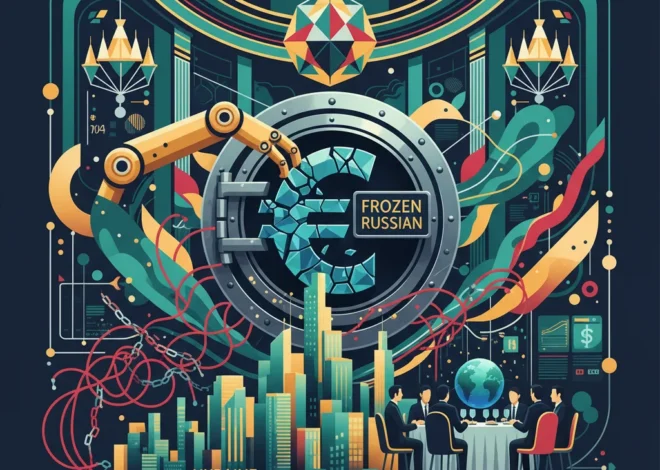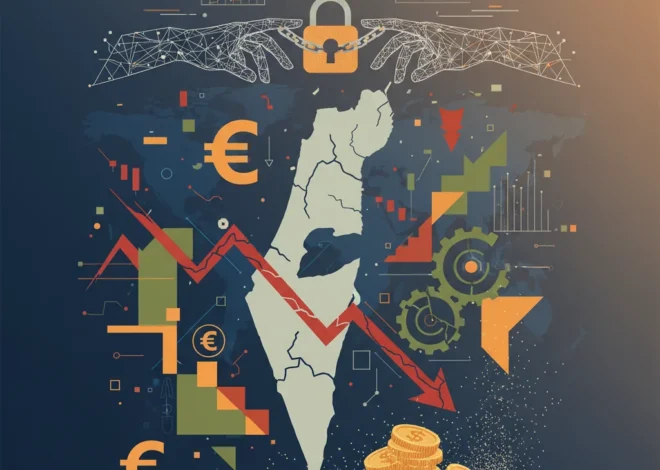
China’s Tech Dragon Wakes: Inside the New 5-Year Plan Shaping the Global Economy
A New Blueprint for a New Era
The world’s second-largest economy is at a critical juncture. As the Chinese Communist Party’s Central Committee prepares for its pivotal Third Plenum, the whispers from Beijing are becoming a roar: a new economic chapter is about to be written. Faced with intensifying technological containment from the United States and persistent deflationary pressures at home, China is set to unveil a 5-year plan that signals a dramatic strategic pivot. The old playbook of debt-fueled infrastructure and real estate is being shelved. In its place, a bold, two-pronged strategy is emerging: achieving technological self-sufficiency and igniting domestic consumption. For global investors, business leaders, and anyone involved in international finance, understanding this shift isn’t just important—it’s essential for navigating the future of the global economy.
This isn’t merely an incremental policy adjustment. It’s a fundamental reimagining of China’s economic engine, born from necessity. The plan is expected to be the centerpiece of the upcoming plenum, a meeting historically used to set the nation’s economic course for years to come. The goal is to build a more resilient, innovative, and internally driven economy that is less vulnerable to external shocks, particularly US sanctions on high-tech components. According to sources familiar with the policy discussions, the emphasis will be on “new productive forces,” a term encompassing a range of cutting-edge technologies from artificial intelligence to biotechnology (source). This strategic reorientation will have profound implications for global supply chains, the stock market, and the very nature of international competition.
The .2 Trillion Typo: Unpacking the Monumental Foreign Investment Bet on America
Pillar One: The Quest for Technological Sovereignty
At the heart of China’s new strategy is an all-out push for technological independence. The ongoing “chip war” with the United States has served as a stark wake-up call, exposing critical vulnerabilities in China’s supply chain. In response, Beijing is preparing to channel massive state resources into key high-tech sectors to close the gap and, eventually, lead the world. This is not just about national pride; it’s a matter of national security and economic survival in an increasingly polarized world.
The government’s focus is laser-sharp, targeting specific industries deemed critical for future growth and strategic autonomy. This state-directed industrial policy aims to create national champions capable of competing with—and one day surpassing—their Western counterparts. Below is a breakdown of the priority sectors expected to receive significant state backing and investment.
| Priority Technology Sector | Strategic Importance & Rationale |
|---|---|
| Semiconductors | To overcome US sanctions and build a domestic chip industry, reducing reliance on foreign technology for everything from smartphones to military hardware. |
| Artificial Intelligence (AI) | Seen as a foundational technology for future economic competitiveness, military modernization, and social governance. |
| Biotechnology & Pharmaceuticals | To bolster public health security, reduce dependence on foreign drug patents, and capture a larger share of the global healthcare market. |
| Quantum Computing | A long-term bet on next-generation computing power with significant implications for cryptography, materials science, and national security. |
| Green Energy & EVs | To build on existing strengths, dominate the global green transition, and achieve energy independence. |
This massive investment in financial technology and hard tech represents both an opportunity and a risk. For investors, it signals clear areas where government support will create tailwinds. However, it also raises concerns about capital misallocation, the creation of state-subsidized bubbles, and the potential for inefficient, top-down innovation. The success of this gambit will determine whether China can escape the “middle-income trap” and redefine its role in the global economics landscape.
Pillar Two: Waking the Sleeping Giant of Domestic Consumption
While the tech race captures headlines, the second pillar of China’s plan is arguably more challenging: unlocking the power of its 1.4 billion consumers. For years, China’s economy has been powered by investment and exports, but this model is showing its age. A protracted crisis in the real estate sector and falling consumer prices have raised the specter of deflation—a vicious cycle of declining demand and economic stagnation. One adviser to the government noted that “the biggest challenge is how to boost household consumption” in the face of these headwinds.
Beijing’s strategy is to foster a “dual circulation” economy, where domestic demand becomes the primary driver of growth, supplemented by international trade. This involves a host of potential reforms aimed at increasing household disposable income, strengthening the social safety net to reduce precautionary savings, and encouraging spending on services and high-quality goods. The government understands that a robust domestic market not only insulates the economy from global volatility but also provides a massive, captive audience for its burgeoning tech champions. Success here would create a self-reinforcing cycle: innovative domestic companies create high-paying jobs, which in turn fuel consumption, further powering corporate growth. This shift could have a major impact on global brands that have long relied on the Chinese consumer, as domestic alternatives gain favor and market share.
The Dragon's Embrace: Decoding the High-Stakes Economic Gamble Between India and China
For investors, this calls for a nuanced approach. Blindly betting on state-supported sectors could be risky. Instead, the smart money will be looking for companies that not only benefit from policy tailwinds but also demonstrate genuine market discipline, strong corporate governance, and a clear path to profitability independent of subsidies. Furthermore, the push for consumption faces a major cultural hurdle: shifting a populace from a high-savings to a high-spending mindset requires more than just policy tweaks; it requires building confidence in the future, a commodity that is currently in short supply amid the property downturn and youth unemployment. The success or failure of this grand plan will likely hinge on Beijing’s ability to manage these softer, more human elements of economic transformation.
The Role of Financial Innovation in the New Economy
Underpinning this entire strategic shift is a quiet revolution in China’s banking and financial systems. To effectively channel capital into high-tech ventures and stimulate consumption, Beijing is leveraging the full spectrum of fintech. The development of the digital yuan (e-CNY) offers the potential for more targeted monetary policy and stimulus distribution, allowing the government to inject liquidity directly into consumer wallets to spur spending.
Moreover, advanced data analytics and AI are being integrated into the lending decisions of state-owned banks, helping to identify and fund promising tech start-ups that might be overlooked by traditional credit models. While not explicitly mentioned as a core pillar, some analysts believe that blockchain technology could play a role in securing intellectual property, streamlining supply chain finance, and creating more transparent trading platforms for new technology assets. According to a government adviser, stabilizing expectations and boosting confidence among private entrepreneurs will be a key task, and a modernized financial system is critical to achieving that goal. This fusion of state direction and financial technology is designed to create a more efficient, responsive, and controllable economic machine capable of executing its ambitious national strategy.
The Gulliver Effect: How a Thousand Legal Threads Could Tie Down the US Economy
What This Means for the World
China’s new 5-year plan is not just an internal document; it’s a declaration of intent to the rest of the world. It signals an acceleration of the economic and technological decoupling from the West and sets the stage for a new phase of global competition. For international businesses, it means re-evaluating supply chain dependencies and adapting to a Chinese market that increasingly favors domestic players.
For those focused on investing, the plan draws clear battle lines. It highlights sectors in China that will receive immense political and financial backing, creating potential opportunities for those with a high-risk tolerance. Simultaneously, it puts a spotlight on Western companies that will face heightened competition from new, state-backed Chinese rivals. The coming years will test the resilience of the global financial system as these two competing economic models vie for dominance. China is placing a massive bet on its ability to innovate and consume its way to a new era of prosperity. The world will be watching—and feeling the effects—every step of the way.


